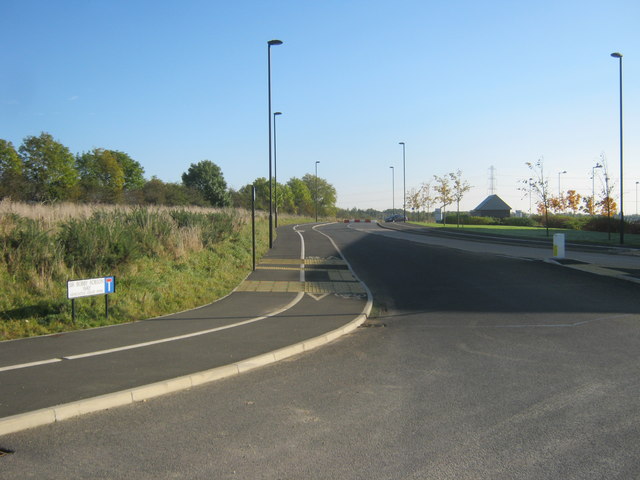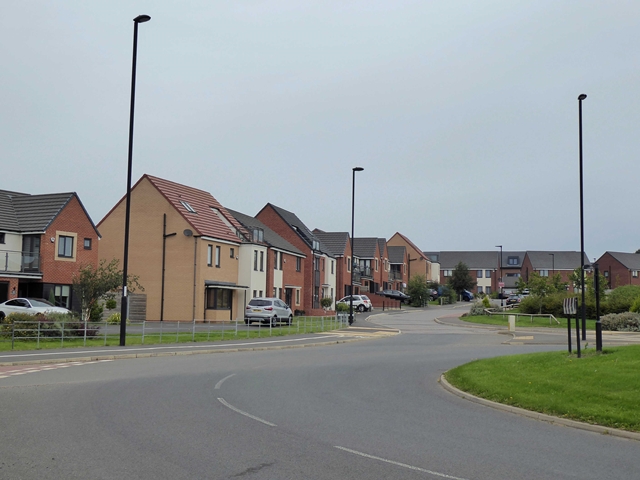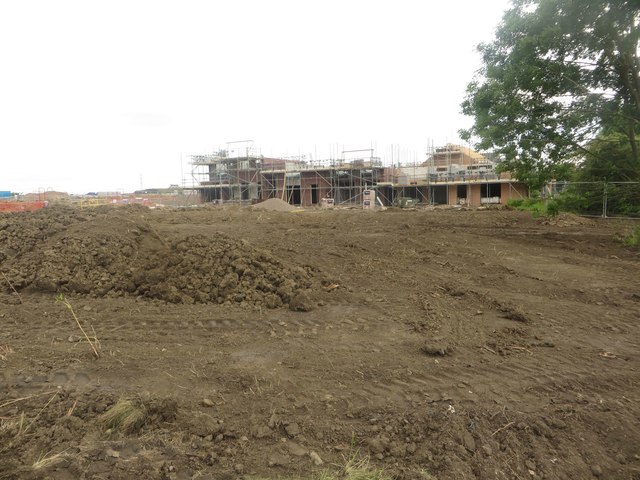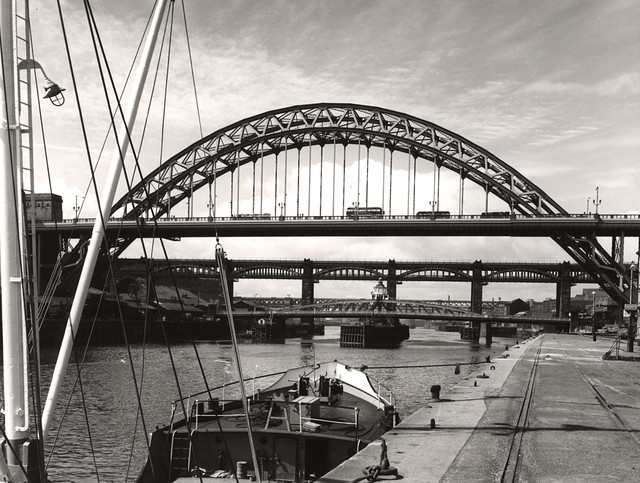Topics > Tyne and Wear > Newcastle upon Tyne > Civil Parishes in Newcastle > Hazlerigg Civil Parish
Hazlerigg Civil Parish
Parish boundaries may have changed - for the latest map see the Parish Council or Newcastle City Council.
About the Parish
| Overview: |
Hazelrigg is one of only six civil parishes in Newcastle upon Tyne (most of the city is unparished). The parish is located about 4 miles north of the city centre. The population has grown in association with the building of new housing, notably the Great Park and Brunton West developments. Hazelrigg Civil Parish was created on the 1st April 1955, when the old civil parishes of East Brunton and West Brunton were abolished. Hazelrigg CP was formed from nearly all of the area which had been East Brunton CP, and a smaller proportion of West Brunton CP.[1] These areas had once been part of the estate of the Haslerigge family, until they were sold in 1768. Five acres from Dinnington CP were also included in the new Hazelrigg CP. |
| Main Settlements: |
Hazelrigg (village), Newcastle Great Park, Brunton West, North Brunton |
| Population: |
1,114 (2021 Census) 980 (2011 Census) 857 (2001 Census) |
| Area: | 0.56 km2 |
| Parish Council: | Hazelrigg Parish Council |
| Unitary Authority: | Newcastle City Council |
| Ceremonial County: | Tyne and Wear |
Historical |
|
| Ancient Township: |
Hazelrigg CP wasn't created until 1955, but it's area included parts of what had been: Townships became civil parishes in their own right in 1866 (see below). |
| Ancient Parish: |
Gosforth Parish (St. Nicholas) Ancient parishes refer to the parishes before the split between ecclesiastical (church) and civil parishes in the 19th century. They had a parish church and often were composed of multiple townships and chapelries. In many cases, townships and parishes were originally based on the territory of manors from the feudal system during medieval times. Civil parishes were created following the Poor Law Amendment Act 1866, in which Church of England parishes, extra-parochial areas, townships and chapelries, became "civil parishes" which could set their own poor rate (tax). Then the reforms of Local Government Act 1894 established elected civil parish councils (or parish meetings for parishes with less than 300 residents) and created urban and rural districts. Boundaries of parishes and civil parishes may have changed over time. |
| Ancient District: |
Castle (ward) |
| Poor Law Union: |
Castle Ward Poor Law Union, formed in 1836. Castle Union Workhouse was located at Ponteland, built in 1848 to house 120 inmates, and later extended. Prior to 1848 the Union used the old workhouse at Heddon-on-the-Wall. Under the Poor Law Amendment Act of 1834 parishes were grouped into Unions, each of which had to build a workhouse if they did not already have one. It ended the old system of locally provided poor relief which had come under strain as numbers out of work grew, following increasing mechanisation of agriculture and the economic downturn after the Napoleonic Wars, along with changing social attitudes. The workhouse provided those unable to support themselves financially with accommodation and work. Inmates were generally segregated into men, women, boys and girls. The workhouse system was abolished by the Local Government Act 1929, but many workhouses lived on as ‘Public Assistance Institutions’ until the National Assistance Act 1948. |
| County: |
Northumberland, until 1974, then: Tyne & Wear, which was created on the 1st of April 1974, following the Local Government Act 1972. Tyne and Wear County Council (1974 - 1986), based at Sandyford House. The council was abolished in 1986 along with the other metropolitan county councils in England by the Local Government Act 1985. However, it remains a ceremonilal county. |
|
District Council: |
Newcastle City (metropolitan borough) Since 1986 Newcastle City Council has functioned as a unitary authority (responsible for both district and county-level functions). |
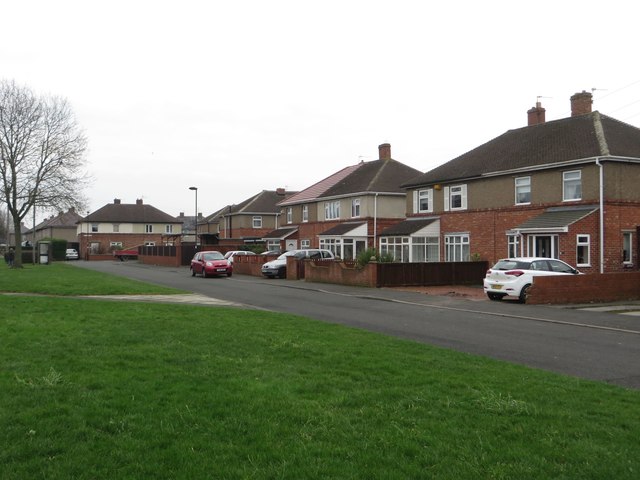
Co-Curate Page
Hazlerigg
- Overview About Hazelrigg Map Street View Hazlerigg is a village in the City of Newcastle (and part in North Tyneside). Historically it was a small agricultural community. The village grew …

from https://www.haveavoice.org.uk…
Hazelrigg Parish Council
- "....Hello, and welcome to the Hazelrigg Parish Council official website, a new platform created to help you share your opinion on what matters most to you in our community.
Here, …
Added by
Simon Cotterill

Co-Curate Page
East Brunton
- BRUNTON, EAST, a township, in the parish of Gosforth, union and W. division of Castle ward, S. division of Northumberland, 4¼ miles (N. by W.) from Newcastle-upon-Tyne; containing 268 inhabitants. …
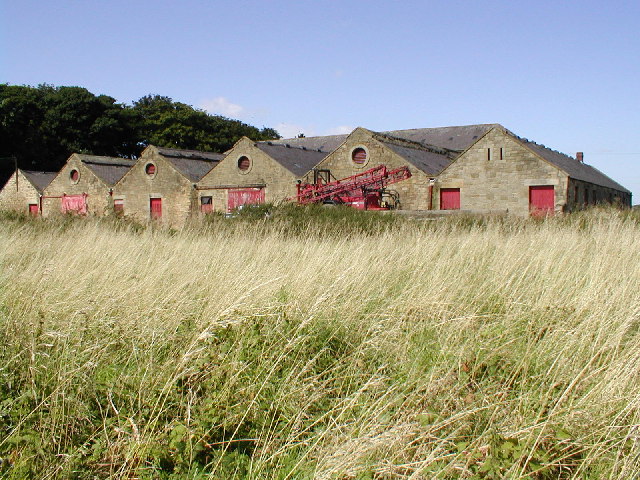
Co-Curate Page
West Brunton
- West Brunton is an area in Newcastle-upon-Tyne, now associated with new housing built on former farmland. A village of West Brunton was recorded in Medieval times, though it's exact location …

from Geograph (geograph)
Office, Esh Plaza Business Park, Newcastle Great Park
Pinned by Simon Cotterill


Co-Curate Page
Hazlerigg
- Overview About Hazelrigg Map Street View Hazlerigg is a village in the City of Newcastle (and part in North Tyneside). Historically it was a small agricultural community. The village grew …

from https://www.haveavoice.org.uk…
Hazelrigg Parish Council
- "....Hello, and welcome to the Hazelrigg Parish Council official website, a new platform created to help you share your opinion on what matters most to you in our community.
Here, …
Added by
Simon Cotterill

Co-Curate Page
East Brunton
- BRUNTON, EAST, a township, in the parish of Gosforth, union and W. division of Castle ward, S. division of Northumberland, 4¼ miles (N. by W.) from Newcastle-upon-Tyne; containing 268 inhabitants. …

Co-Curate Page
West Brunton
- West Brunton is an area in Newcastle-upon-Tyne, now associated with new housing built on former farmland. A village of West Brunton was recorded in Medieval times, though it's exact location …

from Geograph (geograph)
Office, Esh Plaza Business Park, Newcastle Great Park
Pinned by Simon Cotterill


